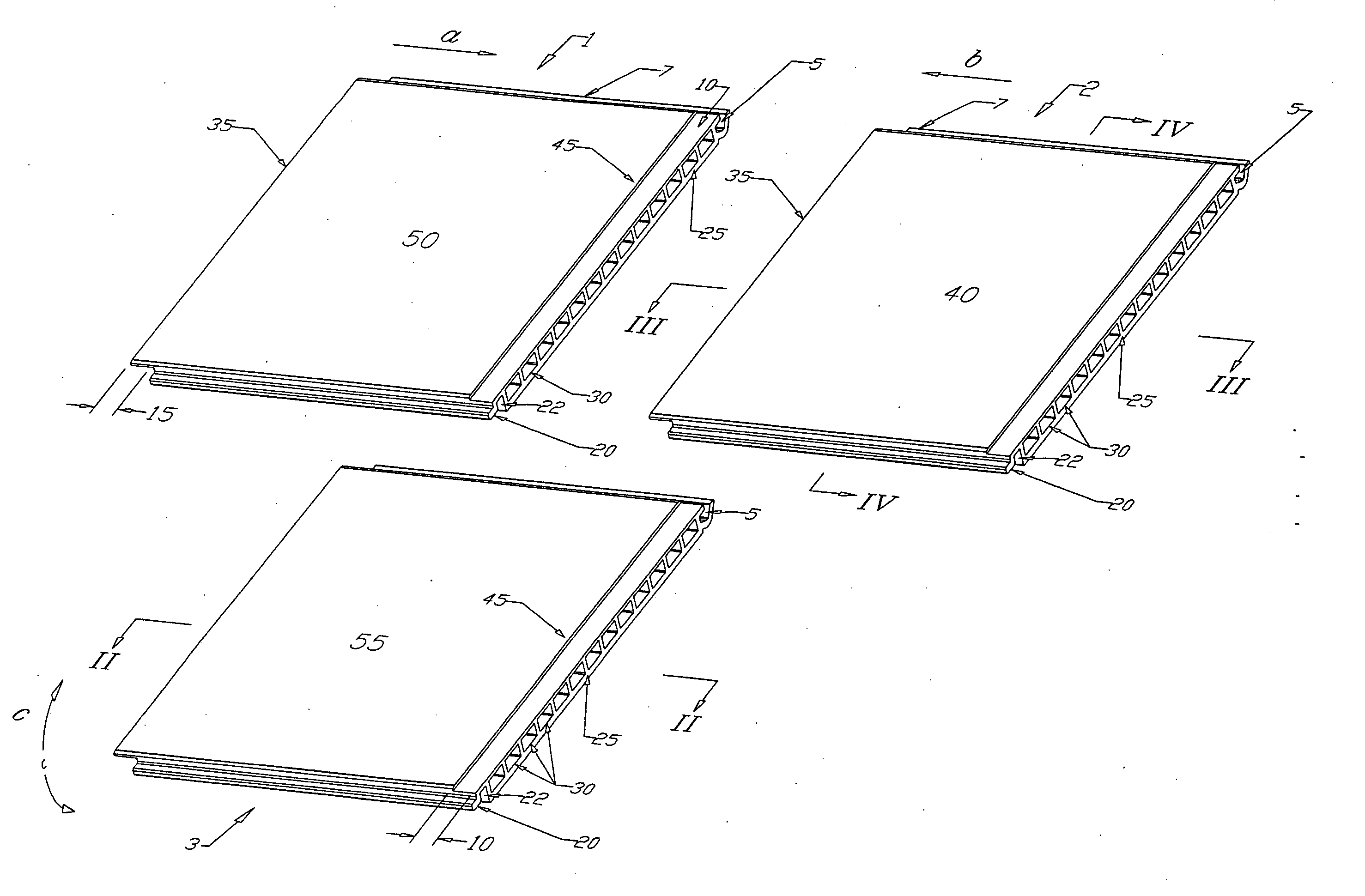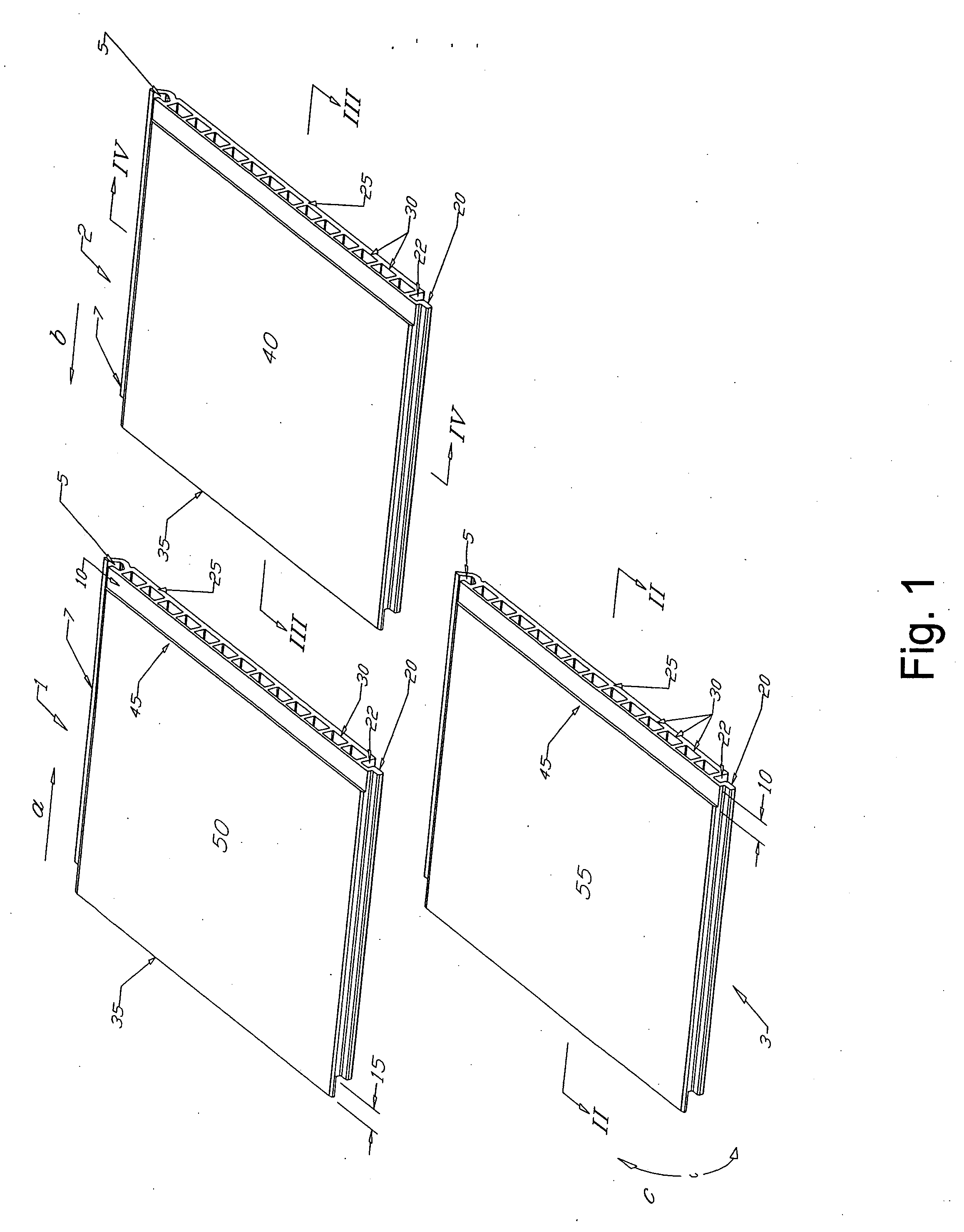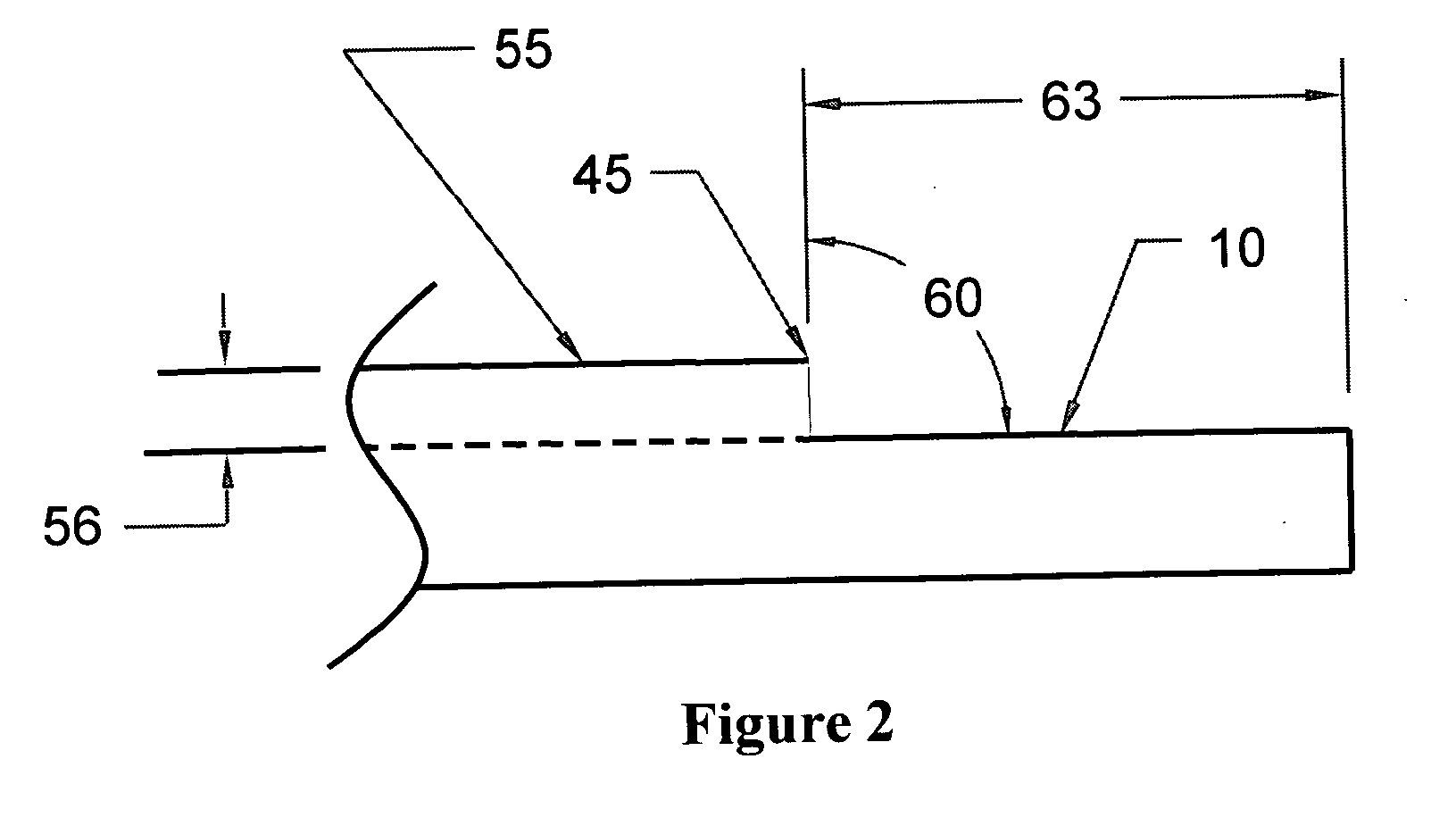Connecting system for surface coverings
a technology of connecting system and surface covering, which is applied in the field of surface covering, can solve the problems of difficult connection of the other side edges of the plank with another similar plank, adhesive can be pressed out of the seams, and the prior proposed floor system has suffered from disadvantages, etc., to achieve excellent joint integrity in strength and water-sealability
- Summary
- Abstract
- Description
- Claims
- Application Information
AI Technical Summary
Benefits of technology
Problems solved by technology
Method used
Image
Examples
Embodiment Construction
[0076] In general, the present invention relates to a surface covering system having a plank or a panel that includes a tongue along an edge of the plank and a mating groove along an edge opposite to the tongue. The plank can have a variety of designs on the other edges of the plank. For instance, the plank can include a shoulder along a third edge of the plank and a protruding lip extending along the fourth edge of the panel opposite from the third edge. The shoulder along one edge of one panel can be adapted to receive the protruding lip along an edge of a similar panel. A feature in one or more embodiments is to provide a panel or a plank comprising a groove defined, at least partially, by a first flange protruding from a first side of the plank along a first edge of the plank, and a second opposing flange protruding from a second, opposite side of the plank along the first edge. The first flange protruding from the first side of the plank can terminate at a distal first flange e...
PUM
| Property | Measurement | Unit |
|---|---|---|
| outer angle | aaaaa | aaaaa |
| outer angle | aaaaa | aaaaa |
| depth | aaaaa | aaaaa |
Abstract
Description
Claims
Application Information
 Login to View More
Login to View More - R&D
- Intellectual Property
- Life Sciences
- Materials
- Tech Scout
- Unparalleled Data Quality
- Higher Quality Content
- 60% Fewer Hallucinations
Browse by: Latest US Patents, China's latest patents, Technical Efficacy Thesaurus, Application Domain, Technology Topic, Popular Technical Reports.
© 2025 PatSnap. All rights reserved.Legal|Privacy policy|Modern Slavery Act Transparency Statement|Sitemap|About US| Contact US: help@patsnap.com



